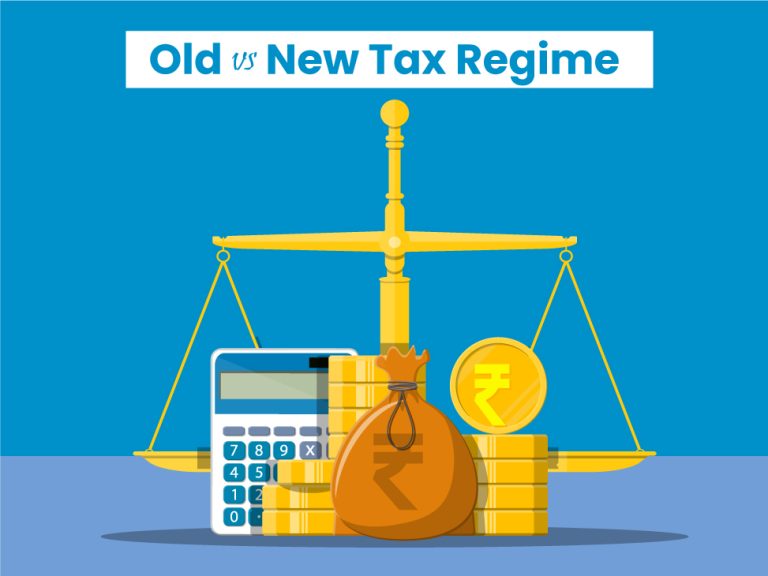Getting home loan is very BASIC now
Get a loan in under 5 mins

India introduced a new tax regime in the Union Budget 2020 as an alternative to the existing tax system. Now, taxpayers can choose between two tax regimes: the old and the new. The old tax regime offers the benefit of various deductions and exemptions, such as those for housing loans, insurance premiums, and investments in tax-saving instruments, which can significantly reduce taxable income. In contrast, the new tax regime offers lower tax rates but does not allow most of these exemptions and deductions. This simplified system aims to reduce the complexity of tax filings. The choice between the two depends on individual financial circumstances. For your ease, we have jot down a detailed comparison of new tax regime vs old to help you understand the differences:
| Income Range | Tax Rate (Old Regime) |
| Up to ₹2,50,000 | Nil |
| ₹2,50,001 to ₹5,00,000 | 5% |
| ₹5,00,001 to ₹10,00,000 | 20% |
| Above ₹10,00,000 | 30% |
| Income Range | Tax Rate (New Regime) |
| Up to ₹3,00,000 | Nil |
| ₹3,00,001 to ₹6,00,000 | 5% (Rebate u/s 87A) |
| ₹6,00,001 to ₹9,00,000 | 10% (Rebate u/s 87A up to 7 lakhs) |
| ₹9,00,001 to ₹12,00,000 | 15% |
| ₹12,00,001 to ₹15,00,000 | 20% |
| Above ₹15,00,00 | 30% |
Note: The new tax regime offers simplified tax brackets but does not allow for most deductions and exemptions.
Old Tax Regime:
| Criteria | Old Tax Regime | New Tax Regime |
| Tax Planning Flexibility | High flexibility with numerous deductions and exemptions available. Ideal for those who are proactive in tax planning. | Limited flexibility; no option for most exemptions and deductions, leading to simpler tax filing. |
| Deductions And Exemptions | Allows for deductions like 80C (ELSS, PPF), 80D (medical insurance), HRA, home loan interest, etc. | No deductions or exemptions, which simplifies the process but may result in higher taxable income for those previously benefiting from deductions. |
| Tax Rates | Progressive tax rates from 5% to 30%, potentially higher if deductions are not utilized effectively. | Lower tax rates across new slabs, which might reduce tax liability for those who have minimal or no deductions. |
| Suitability | Best for individuals who maximize their tax-saving potential through investments, insurance, home loans, etc. | Ideal for individuals who either do not invest in tax-saving options or prefer not to manage multiple deductions. |
| Ease of Tax Filing | Requires careful record-keeping and management of investments to maximize benefits from available deductions. |
Simplified tax filing with minimal calculations required, appealing for those seeking straightforward tax compliance. |
| Switch Flexibility | Salaried individuals can choose to opt-in or out annually, providing a chance to reassess as financial situations change. | Salaried individuals can switch annually; however, business owners once switched can’t revert to the old regime. |
Here’s a clearer and more concise explanation of the income tax slabs for senior citizens and super senior citizens in India for the Financial Year 2023-24, under the old tax regime. The new tax regime, introduced in the Finance Act, 2020, offers concessional tax rates but does not apply to non-resident senior citizens who follow the regular tax provisions.
Old Tax Regime:
Old Tax Regime:
Additional Charges:
Senior and super senior citizens can choose between the old and new tax regimes, with the old regime allowing more extensive exemptions and deductions.
There isn’t a one-size-fits-all answer. Salaried individuals who maximize their deductions and exemptions might find the old regime more tax-efficient. In contrast, those with minimal tax-saving investments or who prefer simplicity might benefit from the lower tax rates of the new regime. It is often advisable to consult with a tax professional to make a well-informed decision based on your specific circumstances.
The better tax regime depends on your financial situation. The old regime may be better if you make significant tax-saving investments and expenses that qualify for deductions. The new regime could be beneficial if you prefer lower tax rates and simpler tax filing without many deductions.
The main disadvantage of the new tax regime is that it does not allow most tax deductions and exemptions such as those under Section 80C, home loan interest deduction, HRA, etc., which could result in a higher taxable income for those who typically maximize these benefits.
In the new tax regime, traditional tax-saving methods through deductions are limited. However, you can save on taxes by structuring your salary efficiently, opting for alternative investments like NPS (which still offers a deduction under Section 80CCD(1B)), and using tax-efficient financial instruments like ULIPs and tax-free bonds.
Yes, individuals can switch from the new regime to the old regime annually at the time of filing their income tax return, depending on which is more beneficial. However, business owners who opt for the new regime cannot switch back to the old regime as easily.
The new tax regime may be suitable for individuals who do not invest much in tax-saving instruments or do not have significant expenses that qualify for deductions under the old regime. It’s also ideal for those who prefer simplicity in tax filing.
Yes, individuals and HUFs have the flexibility to switch between the old and new tax regimes every financial year based on their financial activity, deductions, and what’s most advantageous for them taxwise.
Published on 14th May 2024